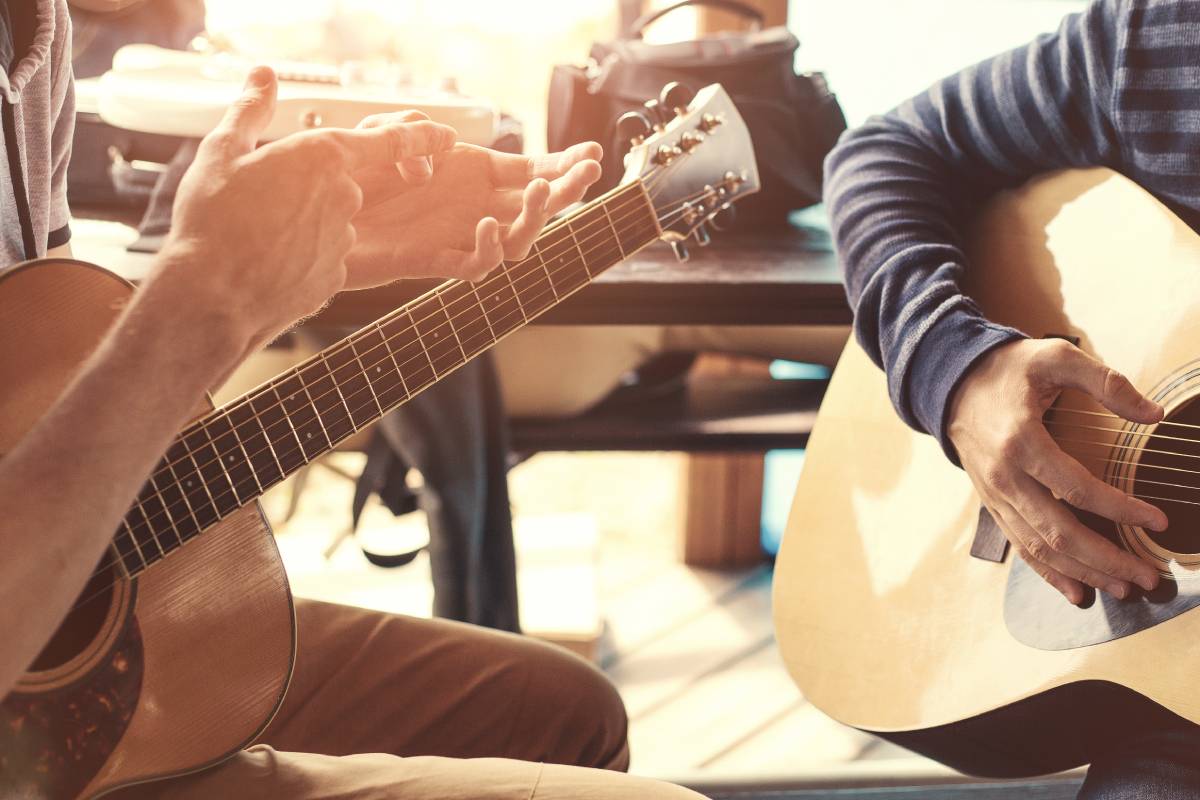Having your first jam session with friends or other musicians in general can be quite daunting, but here are some basic guidelines you can follow to leave a great impression.
Preparation
Before entering a jam session, you should have at least two different voicings for the most basic chords down so that you can add to the general sound, instead of playing the same chord that anybody else plays, which bears the risk of making the total sound muddy.
Look into the topic of chord inversions if you need a starting point.
Barre chords can also make your life a lot easier in that regard, as well as when it comes to playing in random keys. You are not always able to play everything in the key of C Major or A minor.
In most jam sessions at some point it comes back to a simple blues pattern, and more often than not, they are not played in the key of C. So learning a blues pattern in different keys can help you stay on track and able to continue to participate.
During the Jam Session
Before starting to play, try to get at least a little bit organised.
Make clear who plays what at which time:
Some play solos, some play rhythm, but not all the time, so in order to avoid a big mess and everybody just doing his or her own thing, which is not very appealing to watch and listen to, even as a participant, get clear on how many turns everyone has and set communication guidelines so that you can keep some spontaneity as well.
You might want to have a chord progression that is repeating over and over, or you can play the 12-bar blues pattern, or a series of riffs.
Best would be to write that on a board so everyone can refer back to it, and avoid getting lost during the session.
When it is your turn to play rhythm, try to stay tight while at the same time listen to what others are playing so that later on you can try to “steal” some of their licks and integrate them into your playing. This is great for learning something new and exactly the purpose of jam sessions.
Now it is your turn to play a solo. For every turn you get, try to pick up at least one new lick or technique from another participant and do a variation of it.
And here is the most important part about how to play a solo, if you want to be seen as somebody who knows what he or she is doing:
Avoid playing too much and keep your statements short and concise. Vary them a little bit every time you repeat them. Do not play scales up and down, avoid noodling, and try to stay tasty and take a few risks every now and then.
Jam sessions are not meant to be perfect, they are meant for learning and having fun!
About the author:
Michael Korte is guitar teacher in Finland passionate about teaching his students to play freely and without limitations. His kitaratunnit in tampere are specialized in teaching solo playing, creative expression, and songwriting.





